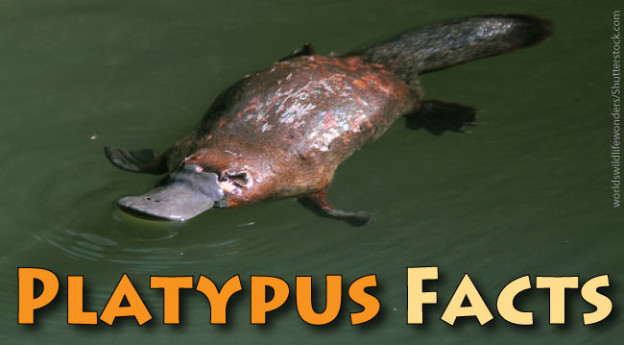Eduhonesty: Stay with me to get to the platypus.
Except for squishy balls and other silent fidgets, schools should be bringing the hammer down on activities that distract other students. Distractions are not harmless. If five minutes per student are lost by students watching other students with their fidgets, in a class of 30 students that’s a loss of 150 minutes, or 2 1/2 hours. Fidgets should be silent or nearly so, and boring viewing for nearby students.
Today the one child in my church’s early service was spinning his fidget spinner throughout the service. Better than an IPAD, I guess… But pacification is not training. Fidget spinners teach time diversion, not time management.
But enough of this topic — probably as appealing as Trump Tweets to many teachers! I threw in platypuses above so my audience would not throw me in the mental discard pile immediately.
I owe you some platypus facts. The below source was found at http://www.activewild.com/platypus-facts-for-kids/ and invites social media sharing. I love sites that freely share facts. Kudos to the authors here:

Platypus Facts For Kids
“You may have heard of the platypus, but did you know that this strange-looking Australian animal is venomous? This incredible mammal is truly unique and has several other unusual characteristics; we’ll find out about these further down the page. This article contains platypus information and pictures, plus a list of platypus facts for kids.
Oh, there’s also an awesome video for you to watch!
This page is part of our Australian Animals series.
If you enjoy finding out about the Platypus, feel free to share this article on social media using the buttons above!
Platypus Information: Introduction
The platypus (scientific name Ornithorhynchus anatinus) is a highly unusual animal. Not only is it venomous, but it is also a member of a group of curious mammals called the monotremes.
Rather than giving birth to live young like other mammals, monotremes lay eggs!
There are only five species of monotreme: the platypus, and four species of Echidna. (You can read about Echidnas here: Echidna Facts)
The platypus is found along the eastern side of mainland Australia and in Tasmania. It lives near freshwater streams and rivers and is highly adapted for its semi-aquatic lifestyle.
As we’ll see further down the page, it has a useful trick up its sleeve for locating food.
Description
At first glance the Platypus looks like a strange mixture of several different animals: it has the webbed feet and brown coat of an otter, the flattened tail of a beaver, and the large bill of a duck.
The large bill gives rise to the animal’s other common name: the duck-billed platypus.
The platypus’s bizarre appearance caused much confusion among early naturalists. In 1799, Dr George Shaw, a keeper at the British Museum, was presented with a dried platypus skin. The animal’s appearance was so unusual that Dr Shaw was suspicious that the museum had fallen victim to an elaborate hoax.
Believing that someone had joined a duck’s bill to another animal’s body, he used scissors to try to separate the parts. The marks his scissors left on the skin can still be seen today!

You can see why they’re sometimes called ‘duck-billed platypuses’!
The Platypus’s body and tail are covered with dense, waterproof fur. This traps a layer of warm, insulating air close to the animal’s body.
The platypus’s legs are attached to the sides of its body, rather than underneath. This gives the animal a reptile-like gait.
When walking on land, the platypus walks on the knuckles of its front feet to protect the webbing between its toes. There is less webbing on the hind feet.
How Big Is A Platypus?
The platypus’s weight varies considerably from individual to individual, ranging between 0.7 and 2.4 kg (1.5 and 5.5 lb).
Males are larger than females, averaging 50 cm (20 in) in total length. The average body length of females is 43 cm (17 in).
Venom: A Little Known Platypus Fact!
The platypus is one of the very few mammals that are venomous.
The male platypus has spurs on each ankle that can deliver venom powerful enough to kill small animals such as dogs. While not lethal to humans, the venom can cause excruciating pain.
Female platypuses are also born with spurs, but they drop off within the first year of life and are not venomous.
The male’s venom production rises during the breeding season, suggesting that it is primarily used as a weapon by rival males to establish dominance.
What Does A Platypus Eat?
The platypus is a carnivore, and eats worms, insect larvae, freshwater shrimps and crayfish, all of which are found in its freshwater habitat.
The platypus hunts underwater, using its cheek-pouches to carry prey to the surface before eating.
The platypus needs to consume around 20% of its body weight in food each day. This means that it spends an average of 12 hours per day looking for food.”
The article itself goes on to further describe the platypus. For teachers not locked into a strict curriculum, I could see this providing a great platform for biological discussion about animal characteristics and categorization. The platypus offers a quick picture of the complexity involved in sorting and classifying lifeforms.
______________________________________________________________
My eduhonesty positive for today: We are becoming more sensitive to time lost in dribs and drabs. Our coaches work on transitions, for example, trying to pare away those minutes lost as groups shift activities. We are less and less tolerant of dead minutes and classes killing time while waiting to move on to the next activity. We now see those “few” minutes for the large time loss they may potentially become.



